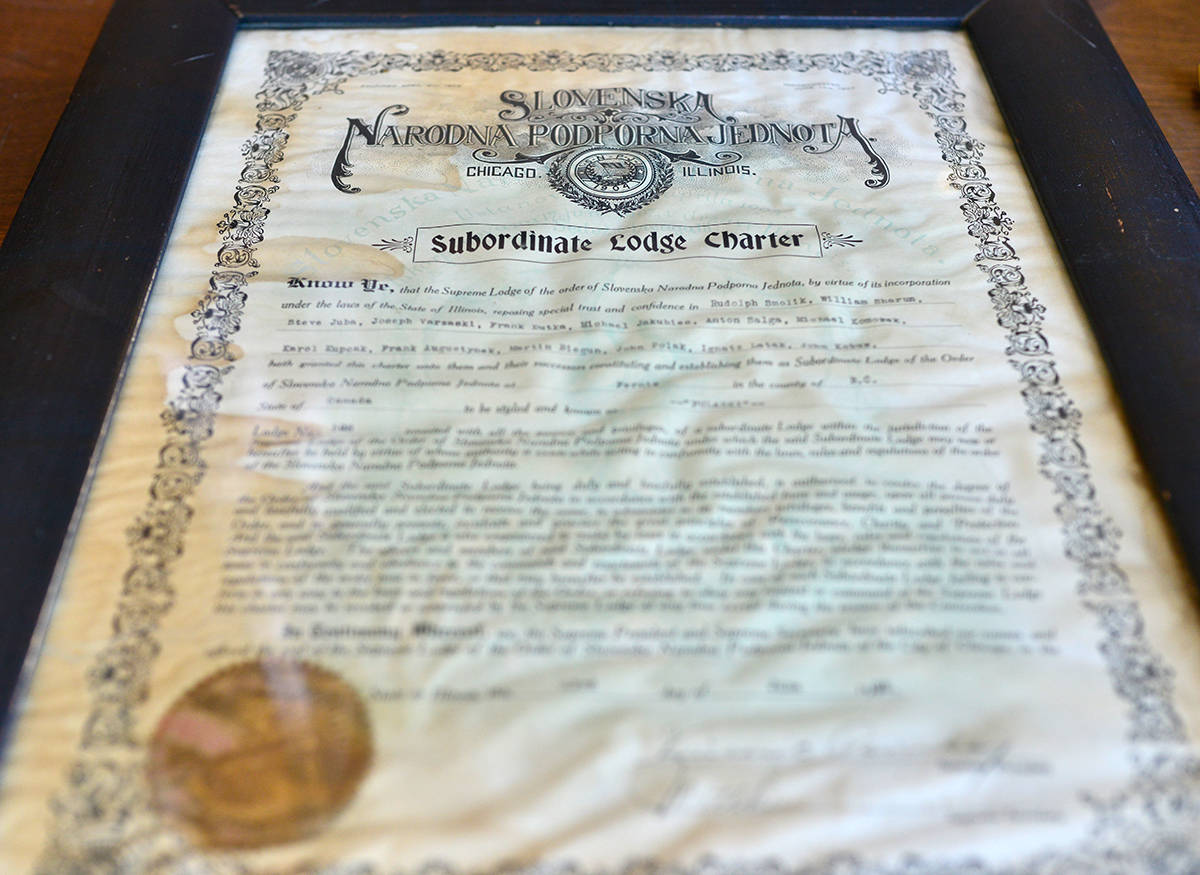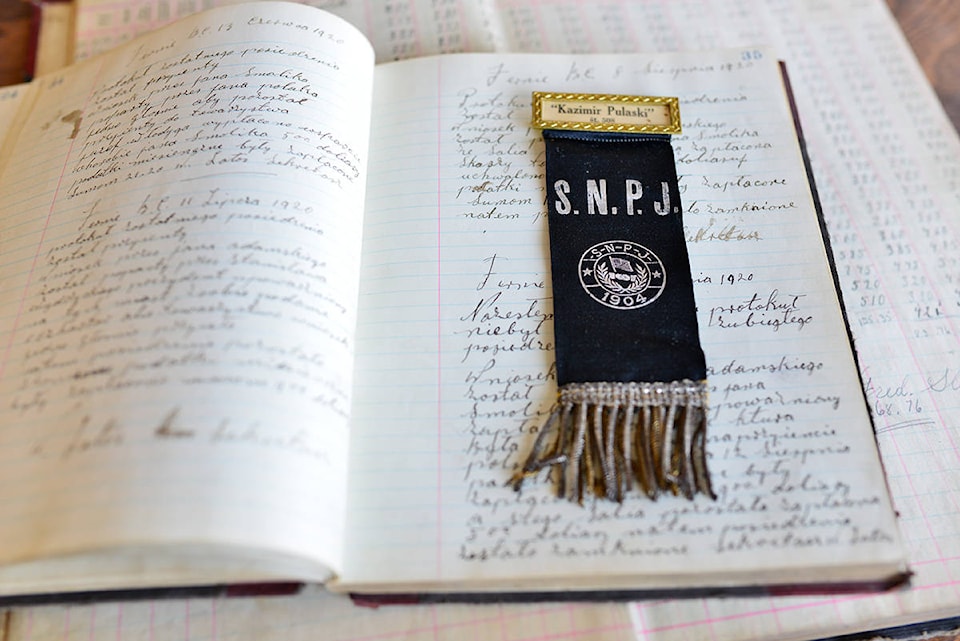A recent donation of historic Slovenian records has given the Fernie Museum a better insight into the lives of these people during the 20th century.
The documents, belonging to the Slovenian Benevolent Society, included log books, as well as some photographs and artifacts.
Museum curator Ron Ulrich says these documents will give them a better insight into who was in this community from 1916 forward. These documents are the first significant pieces of history the Fernie Museum has received, to date.
With these new documents, as well as some Polish documents previously collected, the museum has already connected some dots and discovered that both the Polish and Slovenian benevolent societies started around September,1916. Ulrich says they could only find one explanation for the correlation in dates.
In World War One, about halfway through the war, a number of miners that had been interned in Morrissey Internment Camp, along with several guards, were released to go work at the mines. By about 1916, the need for coal, in particular thermal steelmaking coal, had skyrocketed in order to meet the war demand. The mines in the Elk Valley couldn’t keep up.
“We have no way to prove it, in the sense that there’s no minutes book saying, ‘we formed this society because we need to look after ourselves in light of the internment of some of our brother’. There’s no record that says that. But we can infer it,” said Ulrich.
He says that the Slavic community was quite prominent in Fernie and finding out more about this group is very important.
“The benevolent society, or ethnic societies here in Fernie played a really important role,” said Ulrich, explaining that they were the go-to place for newcomers immigrating from other countries.
Benevolent societies would organize social activities for men and women and families. They also offered English lessons, which were mandatory to work in the mines.
The need for the Italian, Slavic, Polish, and other societies only existed until about the 1930s.
Right now, the museum is in the middle of a large census project. Ulrich said these documents from the benevolent society would help to complete this.
For the past year and a half, the museum has been working on what they are calling, the Enemy Aliens project. The focus of this is the history of the Morrissey Internment Camp.
Those who were interned were restricted in their movement. They could travel to and from work, but were forbidden to leave town. They also had to report to the police once a month.
“In essence, it was a form of house arrest,” said Ulrich.
The internment camp was made up of single male immigrants only; Fernie only had accommodation for families. Any man with a wife and children was allowed to stay in the city, whereas single men were forced to remain in Morrissey. They usually occupied the outdoor jobs, manning the coke ovens, as the men working underground didn’t want members of the Polish or Slavic community working with them.
In 1913, the bottom fell out of the coal market, causing several mines along the Crowsnest route to close. The Elk Valley was left with two profitable mines; Michel, and Coal Creek.
This caused half of the workforce to be laid off. The other half only worked two or three days a week.
Ulrich explained that the English miners, who thought themselves far superior to their immigrant brothers, gathered together and demanded that the ‘Enemy Aliens’ be rounded up and forced away from the mines.
“That’s exactly what happened,” said Ulrich.
“Three hundred single men were rounded up and taken into town to the Fernie Arena, which was located at that time down by the boat launch.
“These records . . . will give us an indication of who was released and who remained in town.”
For the Fernie Museum, the mystery has always been, where did these miners go to?
“These records will be able to piece some of those pictures together,” said Ulrich.

